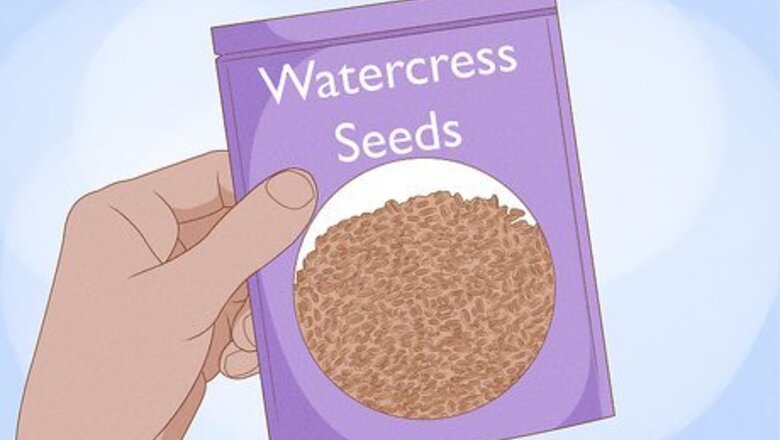
views
X
Research source
Growing Watercress in Containers
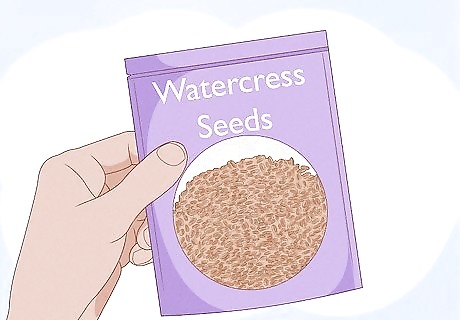
Purchase the watercress seeds. Seeds can be ordered online or from gardening supply stores and nurseries. Popular varieties of watercress include English Watercress and Broad Leaf Cress. You can also start growing from mature watercress purchased at a supermarket or farmer’s market. Cut the ends, then soak the base of the stalks in water for a few days to encourage root growth and proceed to plant them in soil as you would from seed.
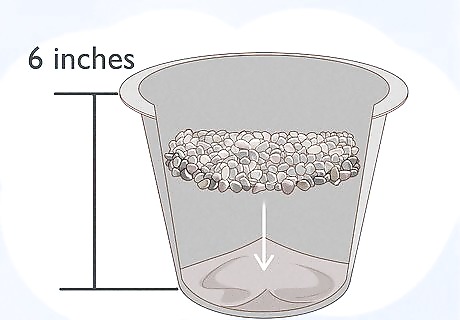
Prepare the container for planting. Choose a large container or planter with drainage holes that is at least 6 inches (15.2 cm) deep. Add a layer of landscaper’s cloth at the bottom of the container to keep the potting mix from escaping when you water. Add pieces of broken pots or small pebbles to the bottom layer of the container to allow for good drainage. You can also use multiple small containers and place them in a larger drainage tray. Plastic containers are recommended over terra cotta ones, which can dry out too quickly for watercress.

Place a larger drainage tray or bucket beneath the planting container. You need to water the plant often. It's soil should be wet at all times. You can put excess water in the tray or bucket to keep the plant wet. You can also place small pebbles in the drainage tray to allow water to flow freely into the growing container.
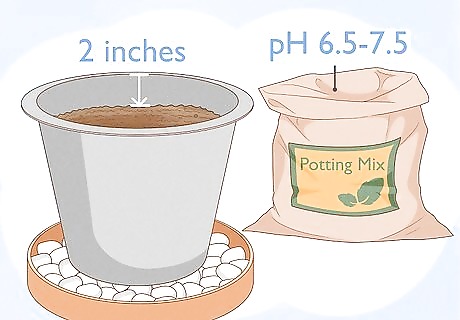
Fill the growing container with potting mix. Use a soilless mixture that drains well and contains peat moss and perlite or vermiculite. Leave approximately two inches (5 cm) of space to the top rim of the container and water the mix well. The ideal pH of the potting mix should be 6.5 and 7.5.

Sow the watercress seeds. Place the seeds 1/4 inch (.64 cm) deep in the potting mix, allowing three to four inches (7.6 to 10.2 cm) between each seed.
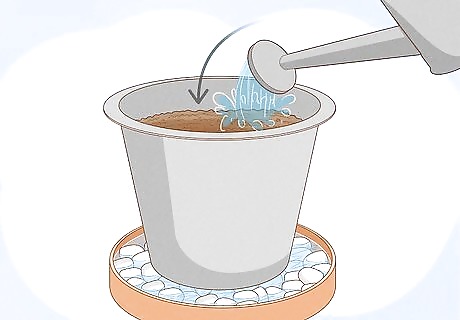
Water heavily. Soak the potting mix deeply enough so that water fills the drainage tray below roughly halfway full, but doesn’t rise higher than the growing container. Replace the water in the drainage tray with fresh water every two to three days. Make sure the tray never dies out. Check it daily to see if you need to add more water. To keep the soil thoroughly cover the surface with a thin, clear plastic sheet that has small holes poked in it, which will retain water and allow airflow. The sheet can be removed when the sprouts begin to appear above the soil. Mist the soil surface well with water in a spray bottle every other day.
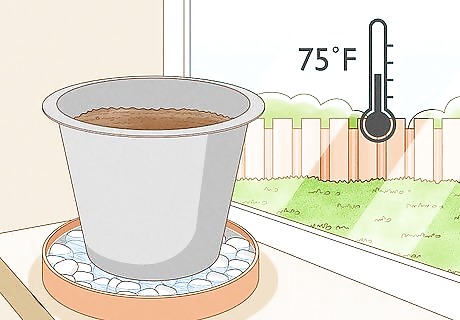
Place the container in indirect sunlight. Position the watercress where it will receive roughly six hours of natural light each day, but try to avoid harsh, direct rays that can burn the young plants. You can keep the containers indoors or when the weather is regularly between 55˚F and 75˚F (13˚ and 24˚C) where you live, you can place the container outside during warmer months. Keep your tools clean. "I'm an avid container gardener, growing my plants organically with very good success. Keeping one's gardening tools and containers clean is also important to keep from transporting any unwanted viruses, bacteria and insects into your new bed/container." - Steve Fowler Plant on the cool side. "I wasn't sure if I could successfully grow watercress away from running water, and this article has assured me how easy it is to grow on the cool side of the house in a pot. It worked fabulously!" - Meg W. We want to hear from you! Advice from our readers makes our articles better. If you have a story you’d like to share, tell us here.
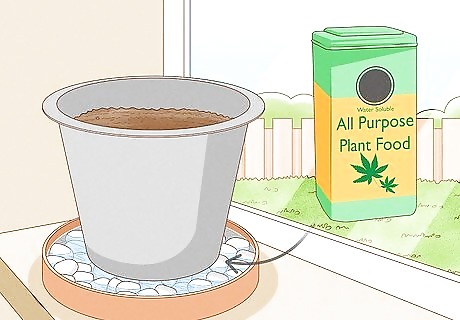
Fertilize the watercress. Add a small amount of water-soluble, all-purpose gardening fertilizer to the water in the drainage tray at the package-recommended rate.
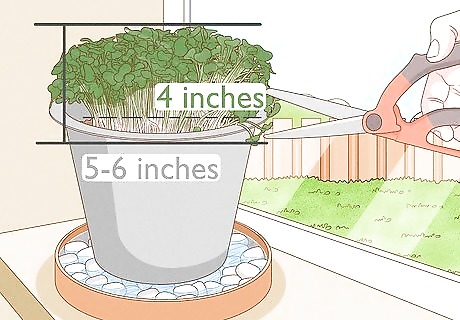
Harvest the watercress. Once the plants have grown roughly five to six inches (12.7 to 15.2 cm) in height use kitchen or gardening scissors to trim the top four inches (10.1 cm) of the plant as needed. Avoid taking more than a third of any plant when cutting to allow the plants enough foliage to continue growing. Periodic harvesting helps encourage new growth.
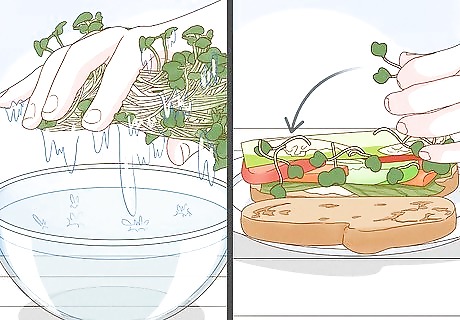
Wash the watercress. Rinse the watercress in cool water, dry it and use immediately or wrap it in bundles and store in the refrigerator for use with a few days.
Growing Watercress Outdoors in the Ground
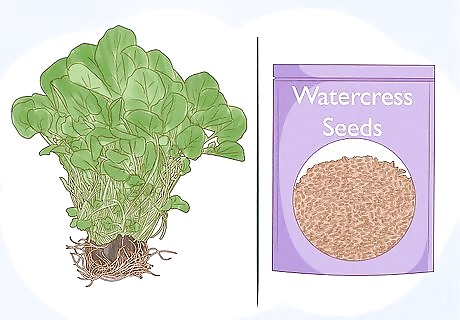
Start growing from mature watercress or seeds. You can purchase mature watercress at a supermarket or farmer’s market. Just soak the base of the stalks in water for a few days to encourage root growth and proceed to plant them in soil as you would from seed. You can also start watercress from seeds, which you can find at a farmer's market, gardening store, or online.

Choose a location for planting. Watercress grows well in cool, but sunny spots with partial shade. Planting watercress in the shallow portion of a steady-flowing, freshwater stream or creek is ideal, but you can also create your own pool or bog of water. Ideal planting times are in early spring after the last frost, or in early fall before temperatures drop too low.
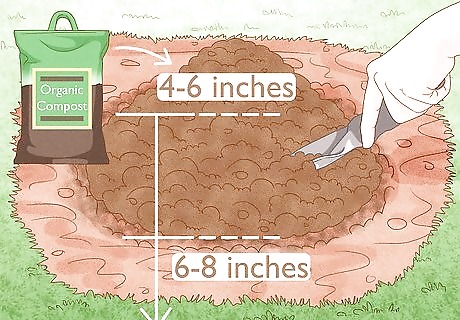
Prepare the growing site. If you have a steady flowing stream or creek, simply mix in four to six inches (10.1 to 15.2 cm) of organic compost into the top six to eight inches (15.2 to 20.3 cm) of soil.

Create a growing site. If you don’t have an existing water source, dig a hole that is roughly two feet (61 cm) across and 12 inches (35 cm) deep to create a bog. Line the bottom and sides with a large sheet of heavy plastic pond liner, leaving a four inch (15.2 cm) lip at the top and punch a few holes in the sides for drainage. Fill the lined hole with a mixture of one part garden soil, one part coarse builder's sand, one part compost and a handful of fertilizer.
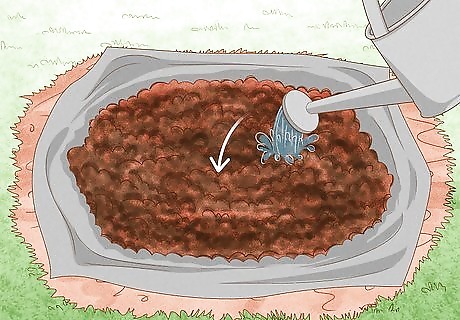
Water the growing site. If planting next to a stream, make sure the soil is deeply soaked. If you’ve created a growing site, fill the bog to the brim with water. If you’ve created a growing site, water the area every two to three days to ensure it remains thoroughly soaked or install a water pump to keep fresh water circulating through the bog.
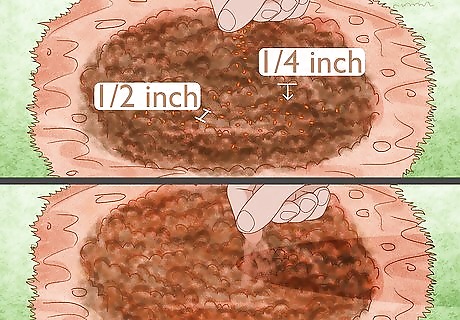
Plant the watercress. Sow the seeds 1/4 inch (6.3 mm) deep and roughly 1/2 inch (12.6 mm) apart, and cover with a thin layer of fine gardening soil. You can also start the watercress indoors using the method above or transplant mature plants. However, as the plants can be delicate, they may prove difficult to transplant.
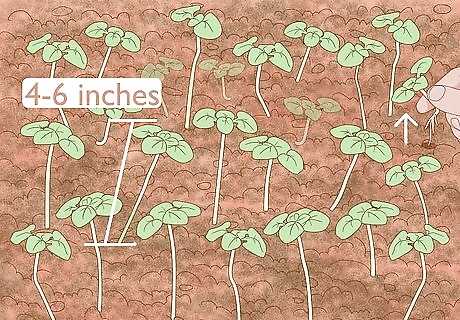
Cultivate the watercress. Once the watercress has sprouted, thin the seedlings roughly four to six inches (10.1 to 15.2 cm) apart. If small white flowers appear, trim them back with gardening scissors to encourage new growth.
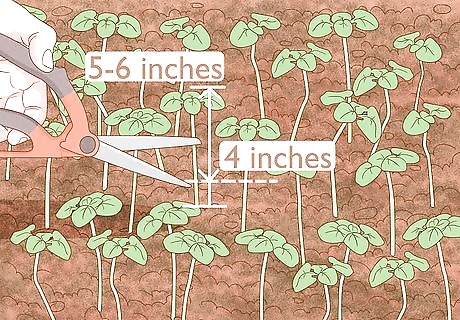
Harvest the watercress. Once the plants have grown roughly five to six inches (12.7 to 15.2 cm) in height use kitchen or gardening scissors to trim the top four inches (10.1 cm) of the plant as needed. Avoid taking more than a third of any plant when cutting to allow the plants enough foliage to continue growing. Periodic harvesting helps encourage new growth.


















Comments
0 comment